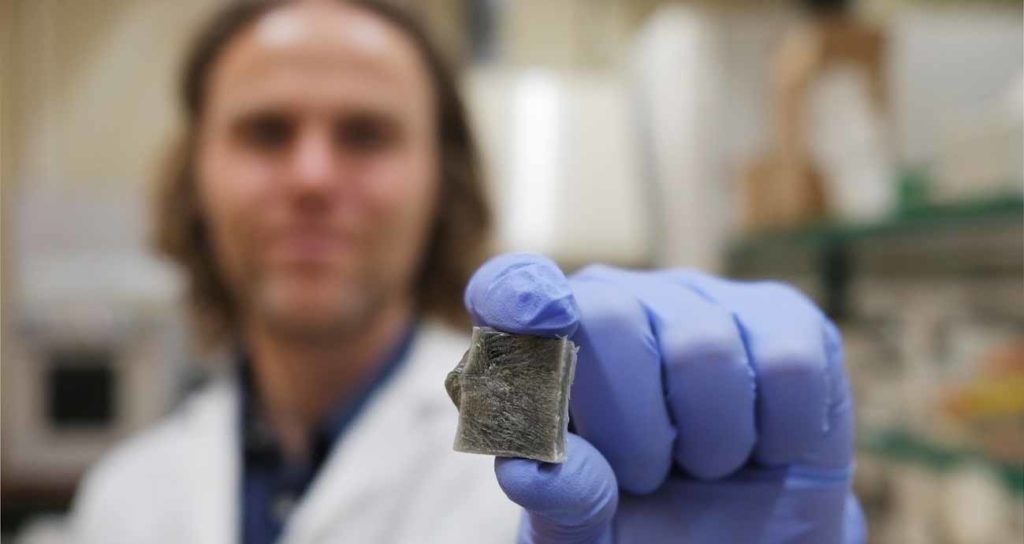 Seaweed foam |ICMM-CSIC
Seaweed foam |ICMM-CSIC
An international team of researchers has developed a novel multifunctional foam that could transform thermal insulation and fire safety in construction. The study, published in Nanoscale Horizonts, includes contributions from the Institute of Materials Science of Madrid (ICMM-CSIC) and demonstrates that it is possible to combine thermal isolation, electrical conductivity, and fire resistance in a single, biodegradable material.
The foam is made from alginate-a biopolymer derived from brown seaweed-and Ti₃C₂Tx, a member of the MXene family of two-dimensional materials known for their excellent conductivity.
“Porosity is essential for thermal insultation but also plays a role in triboelectric nanoenergy generation,” the authors explain.
One of the standout features of the material is its ability to harvest energy through the triboelectric effect, even at a relatively thick 6 millimeters – an uncommon feat for such device. Incorporating just 5% of Ti₃C₂Tx booster the generated voltage by 110%, reaching up to 380 volts and a power density of 43 milliwatts per square metre. “We demonstrate how porosity helps to improve the triboelectric output, thermal insulation, and flame retardancy of MXene composite materials”, the researchers state.
Test revealed the foam has strong insulating properties, with a thermal conductivity of just 62 mW/m·K — close to that of conventional insulation materials such as expanded polystyrene. More notably, the MXene component reduces infrared radiation, suggesting a radiative cooling effect. “The composite foam panels have a very low thermal conductivity and a radiation cooling effect”, the paper notes.
Another key property is the foam’s performance under heat. Not only is it self-extinguishing, but it can also act as an early-warning fire sensor. Its electrical resistance changes rapidly when exposed to flames, triggering an alarm in just two seconds. “Our findings reveal that the electrical resistance of the foams decreased upon fire exposure, which triggers a fast-response fire alarm system capability in just 2 seconds.”
Lightweight (approx. 0.085 g/cm³), highly porous (93%) and derived from renewable sources, this material is an appealing option for sustainable building design. It could also be applied in vehicles, electronics, and aquaculture infrastructure where thermal control and fire resistance are vital.
“The versatility of MXene biopolymer foams may lead to a new generation of smart insulation materials generating not only electricity but also serving as effective flame-retardants and fire alarm systems”, the researchers conclude.


